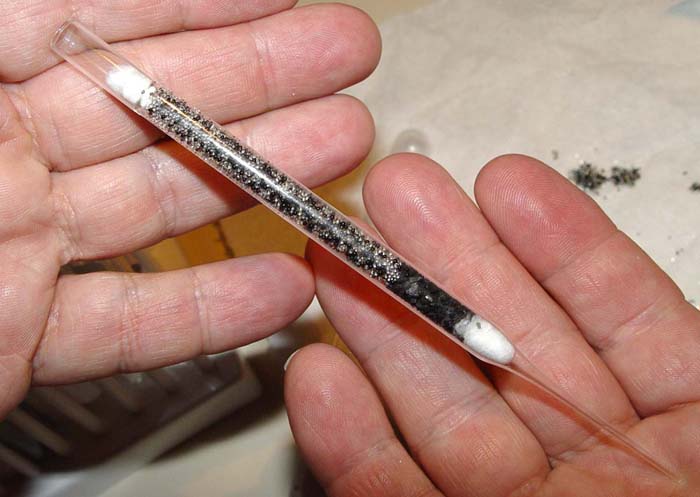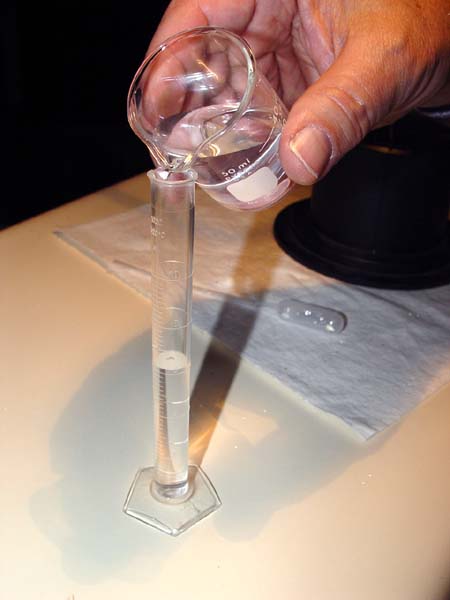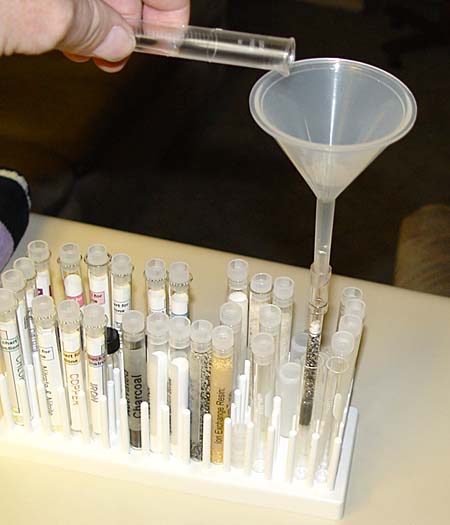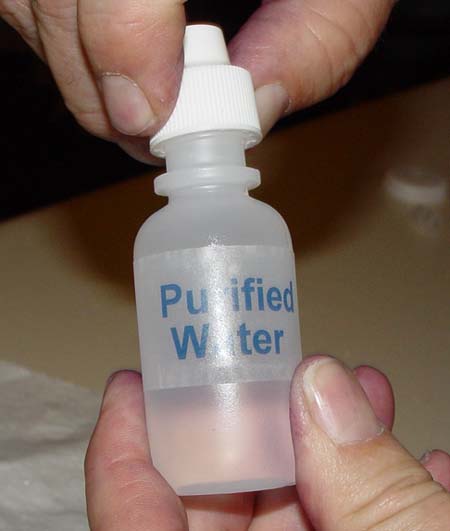Lab #1: Preparing solutions for use in future labs.
Part #1: Preparing Purified Water

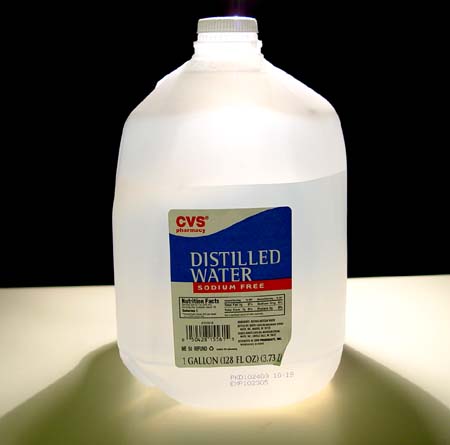
Let's begin with the items that you will need for the lab that you may need to buy at the grocery store. There are four items.
#1. Distilled water: This is not the same as bottled drinking water. Distilled water is made from steam that is cooled and collected. It is supposed to be free of any salts (minerals). An alternative to distilled water is deionized water. Deionized water is water that has been passed through resins that capture all dissolved salts. You use these to rinse off glassware so there are no mineral spots. It is also used where you want pure water.
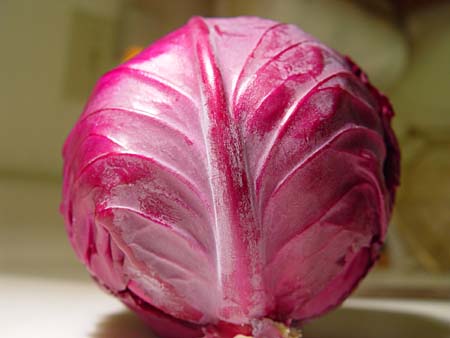

#3. Vinegar or lemon juice:Vinegar or lemon is needed to check how the red cabbage extract responds to an acid. If you do get vinegar, get one that is clear. This white distilled vinegar is clear. You will using vinegar for later experiments.

#4: Baking Soda: Baking soda when mixed in water will make it alkaline (also called basic), which means it is the opposite of acid. It will also be used to test the red cabbage extract.

#1. Ion Exchange Resin: Deionizing type. This
resin is capable of pulling all dissolved salts (minerals) out of water.
It also traps any dissolved compound that has a charge on it such as strong
acids like battery acid (sulfuric acid).
#2. Activated Charcoal: Activated charcoal
traps non-salts like solvents, such as, acetone, alcohol, gasoline, etc.
It also traps drugs and insecticides.
#3. Two empty test tubes: You will use these
to collect purified water and the red cabbage extract.

#4. Glass Pipette: A pipette normally comes with a dropper and is used to transfer liquids. Here we will use it as a miniature glass column (tube). We will pack it with the two powders above (ion exchange resin and activated charcoal).
These glass pipettes are probably the most dangerous part of the kit. They are made of glass and have a pointed end that if broken, will act at a needle. Be careful with them.
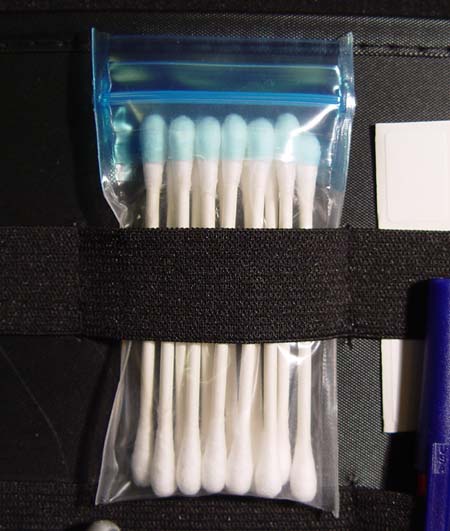
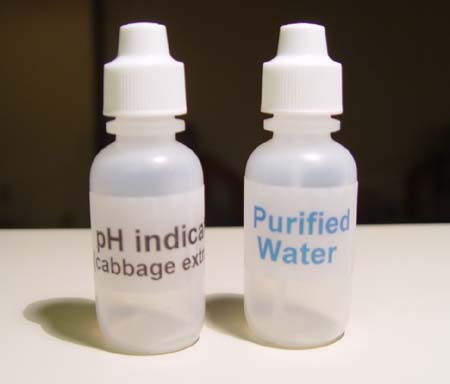
#6. Two plastic dropper bottles. One labeled pH Indicator (cabbage extract) and the other label Purified Water. In this experiment, we will purify the distilled water to make sure it really is pure and place it in the Purified dropper bottle.
We will also be extracting the red pigment from the cabbage and placing it in the pH indicator bottle.
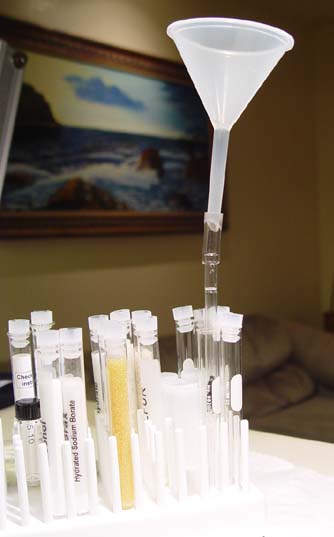
#7. Funnel with a 1 inch plastic connector. Your kit has a funnel and a small piece of plastic tubing pushed onto it (if it doesn't, cut 1 inch off of the clear plastic tubing in your kit).
The picture shows the plastic connector will be connecting the funnel to the glass pipette, which will sit inside of a test tube. The test tube is held by the white test tube holder.


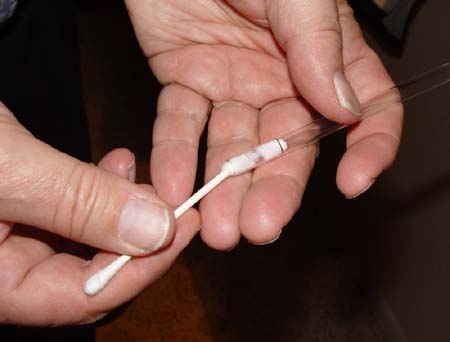


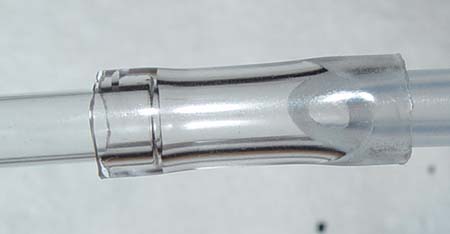

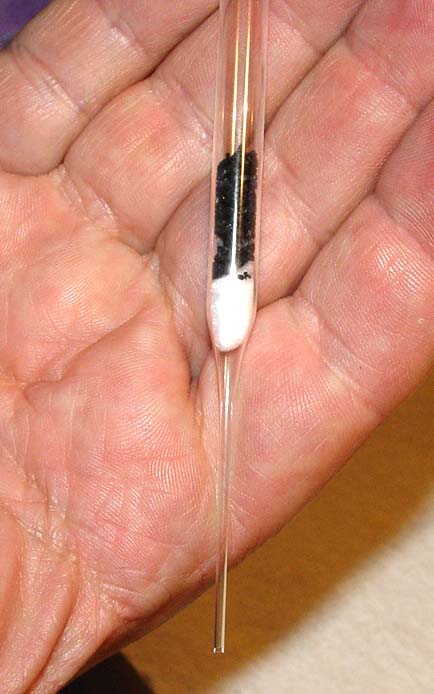
Here is the cotton plug holding back the activated charcoal.
Next we will place on top of the activated charcoal some of the ion exchange resin-deionizing type. It wouldn't really matter if the activated charcoal goes in before the resin or after it. The water passing through will go through both.

The Ion Exchange Resin-deionizing type is wet and is hard to pour. Tap on it to get some to fall into the funnel. You will probably use about one third of the resin in the test tube to fill the glass pipette.
Being wet, this resin will stick in the funnel. You will need to use the plastic pipette that you used to push in the cotton plug here as well.
(Take a picture at this point. See if you can set your camera to either 1600x1200, 1280x960, or 1024x768. If you own a 2 megapixel camera, just use the highest setting [3 stars].)

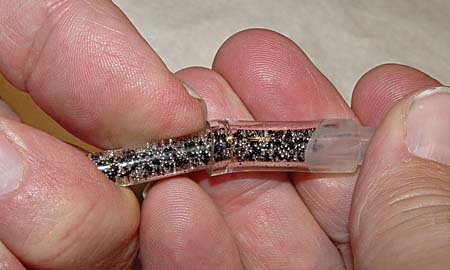
Once the glass pipette is full or nearly full, you can
pull off the funnel and the plastic tubing connector. Warning:
Don't pull real hard, it could break the glass pipette. If
it doesn't come off easily, just leave the connector connected to the
glass pipette and disconnect the funnel. You can make a new connector
from the extra plastic tubing in your kit by cutting off a one inch piece.
Here we see some extra resin in the connector. This can be discarded.
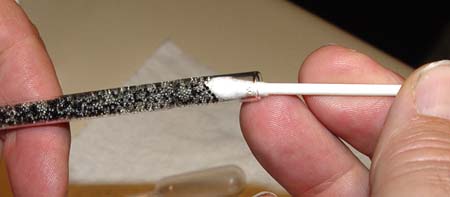
Use a cotton swab to pack the resin a little more tightly in the glass pipette. If it doesn't pack, use the cotton swab to rake out some of the resin to make room for a cotton plug at the top of the glass pipette.
